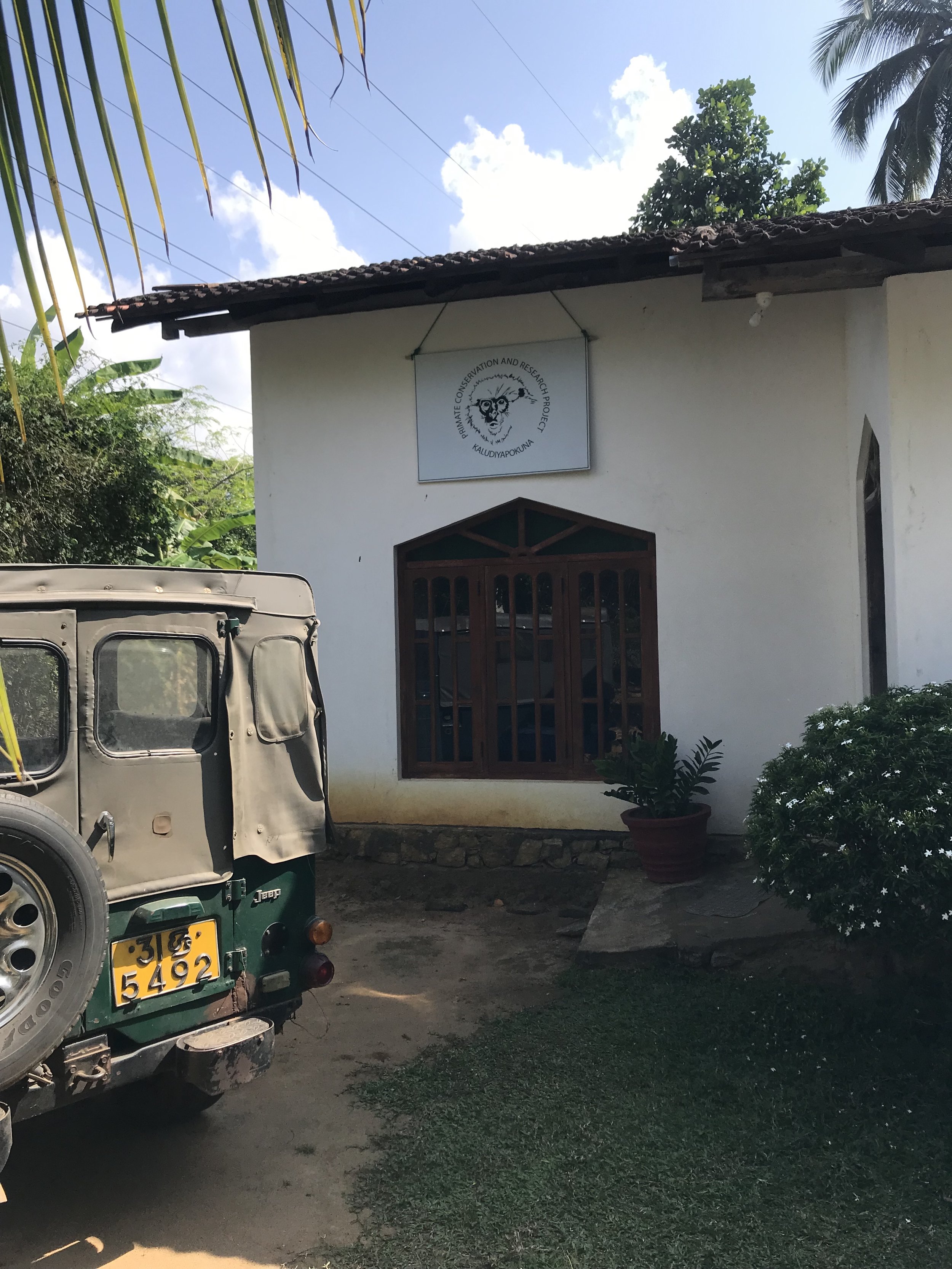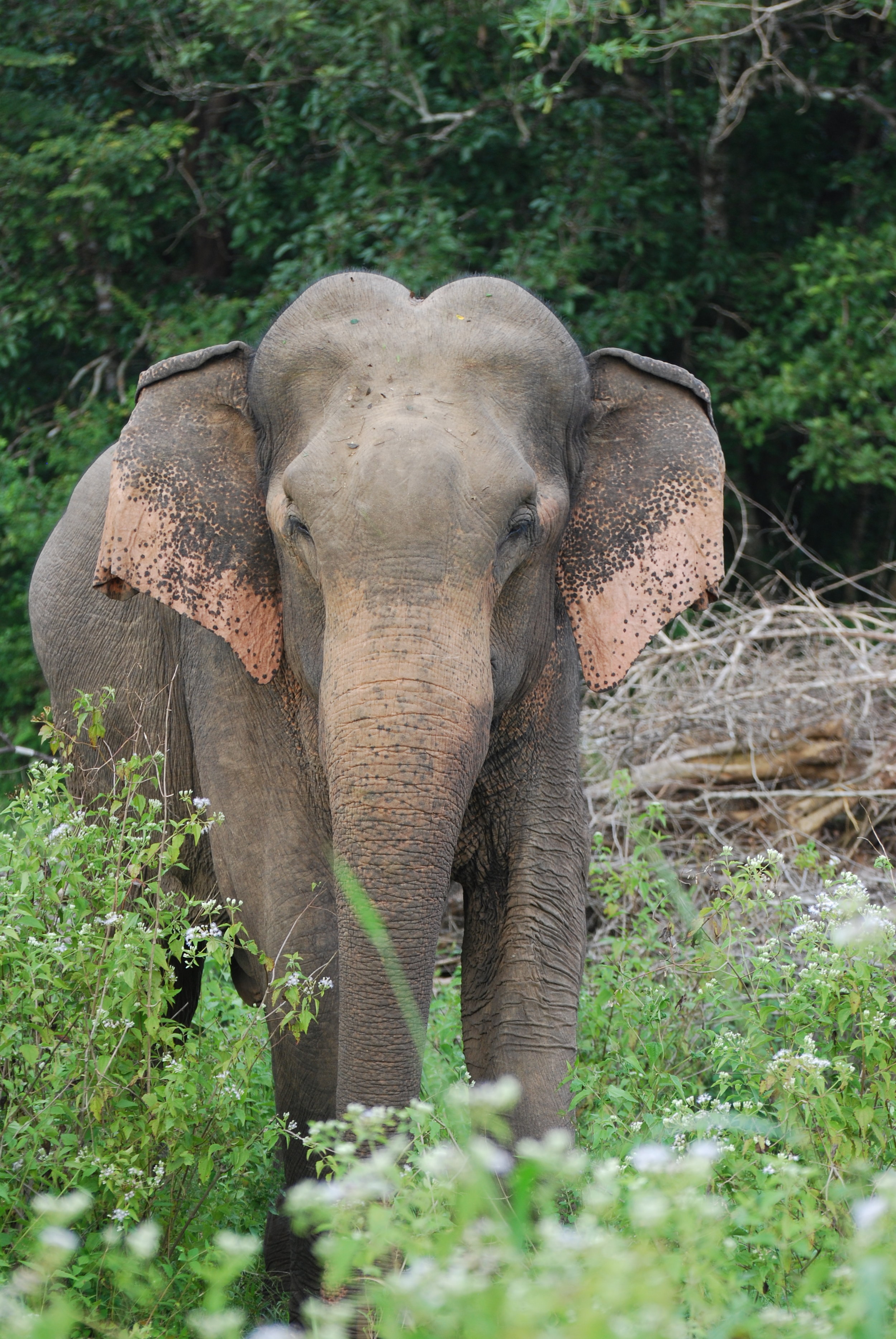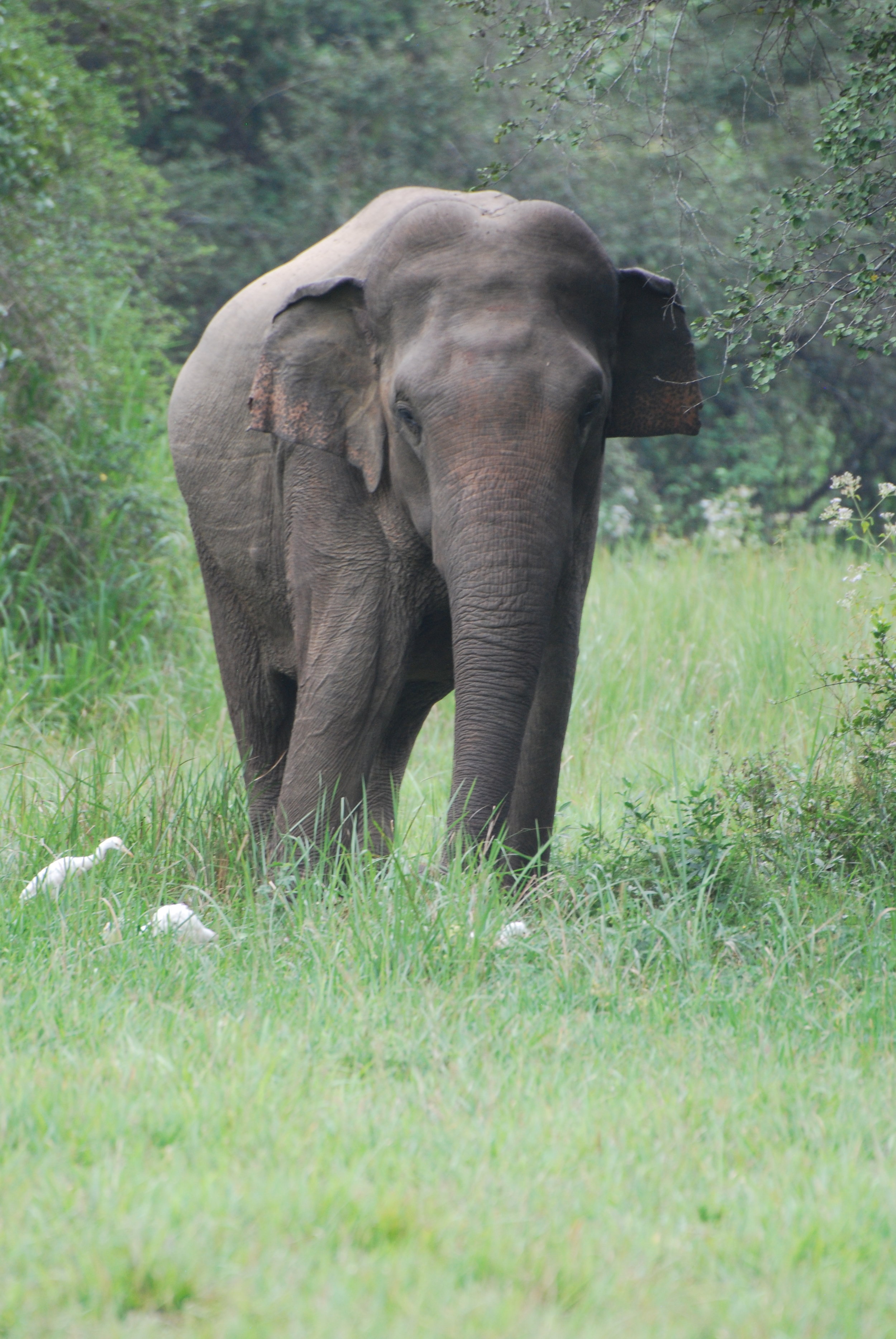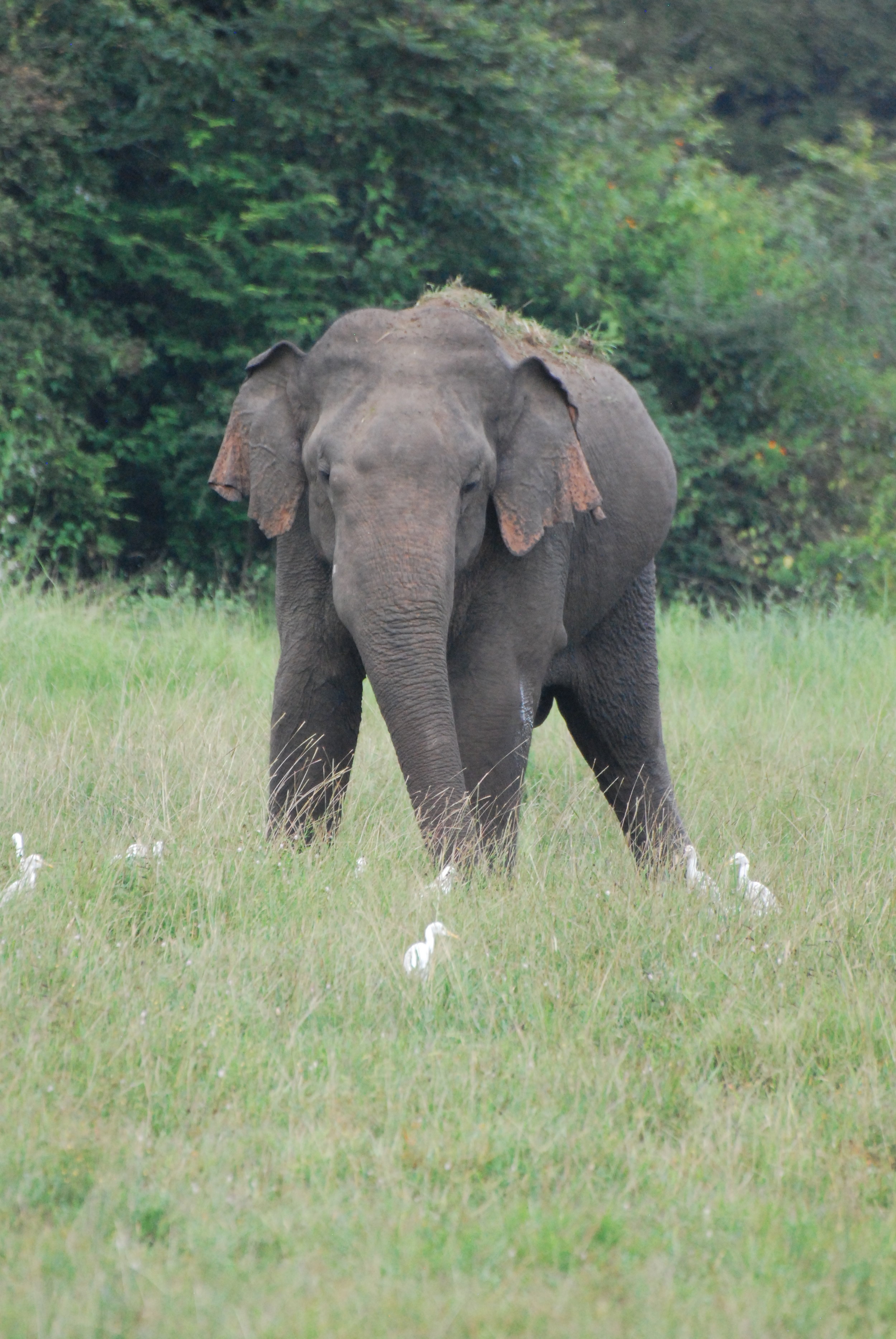I haven’t seen any elephants again since my last update, but I’ve been busy handling all of the things I can get away with ignoring in the field. The life of a graduate student isn’t put on hold just because there’s no internet access: there are still grant deadlines to meet, university paperwork to file, and of course, I’ve already begun planning for my return to the US in August. At the end of this week, I will have been abroad for four months—only five months to go! This past week marked the first time I’ve left the island since arriving back in November, as the United States-India Educational Foundation (USIEF, the Indian equivalent to the US-Sri Lanka Fulbright Commission [US-SLFC]) hosted the South and Central Asia Fulbright Conference in Kochi, India. (The city is also widely known as Cochin, the name given by the British.)
The conference was a time for about 175 student and senior scholars to share the work that we’ve been conducting in the South and Central Asia region, including Bhutan, India, Kazakhstan, Kyrgyzstan, Nepal, Sri Lanka, Tajikistan, and Uzbekistan. By far, the most attendees were completing Fulbright grants in India—of the 101 presentations at the conference, 85 came from scholars in India. But India also awards the most grants in the region (for comparison, Sri Lanka awarded three student research grants for 2018-19; India awarded 65). Sri Lanka and Nepal have the next largest programs, as the only two other countries to have in-country commissions in the region. Because of its large program, USIEF hosts the Fulbright conference in India every year (the equivalent conference for Fulbright English teaching assistants is alternated between Sri Lanka and Nepal each year).
A shot of the South and Central Asia Fulbrighters, taken on the first morning of the conference. Photo by USIEF.
But I was happy to visit India, a country to which I’ve never been. At over 45 times the size of Sri Lanka, India has the largest population of Asian elephants in the world, between 25,000 and 30,000 elephants. And the country’s close relationship with elephants is always evident. I stepped off the short 50-min flight from Colombo to Kochi and started to walk towards customs when I saw a life-size elephant statue in the middle of the walkway. Unfortunately, this would be the closest thing to a real elephant that I would see on my short five-day trip to India. I guess that means I’ll just have to come back again.
The whole Sri Lankan cohort (students, scholars, and our fearless leader, Sandarshi) were on the same flight, and we arrived just before lunchtime the day before the official start of the conference at our Le Méridien Hotel, the conference venue. Compared to the conditions I’m used to in elephant land, I felt like royalty at the hotel: hot water, air conditioning, and free WiFi…what more could you want? And on top of all of this, my hotel room (along with a bunch of the other Fulbrighters’ rooms) was only accessible by boat from the main building of the hotel. That’s right: to get to my hotel room from elephant land, I had taken a van, a tuk-tuk, a train, a couple of cars, a plane, another van, and then a BOAT. Sure, it was only a three-minute single-motor boat ride across a river, but even at the end of the conference, there was a certain amount of charm to the experience.
A view from the ritualized boat ride to the main conference venue one morning in Kochi at Le Méridien.
We were some of the first to arrive at the hotel, as others from the region had much further distances to travel. Still, we had a delicious lunch (I miss Indian food here in Sri Lanka), and most of us decided to take advantage of the free time before dinner to explore our surroundings. Nearby Fort Kochi is a popular tourist spot, full of shops, restaurants, and various attractions. So we hopped in an Uber and drove about 20 minutes to be dropped off in the middle of it all. Kochi si right on the coast of the Arabian Sea, so we headed straight for the shoreline to look around (okay, make it wasn’t straight there…we didn’t really have an idea of where we were going). One of the popular attractions for tourists in Fort Kochi is the Chinese fishing nets, a series of stationary nets where small amounts of fish are freshly caught, sold to people walking by, and then cooked by nearby vendors. We didn’t get to see the nets in action, but we did get a few cool photos.
One of the Chinese fishing nets from the back. The net is perfectly balanced, so that a person walks along the length of the beam to dip the net into the water, and then after a bit, a team of fishermen use ropes to bring in the catch.
Another shot, this time of a row of fishing nets during sunset.
We spent the rest of our time wandering around Fort Kochi. We peeked into souvenir and clothing shops and enjoyed walking around the area. We even stumbled upon a temporary art exhibition, the Kochi-Muziris Biennale, which happens every two years, as the name suggests. Featuring work from all around the world, the exhibit brings light to many of the issues facing marginalized groups of people. Forms included paintings, photographs, sculptures, videos, and others. We arrived just a few hours before closing, but you could have easily spent the whole day looking around (there were other satellite exhibits associated with the Biennale all over Kochi too). And by the looks of it, it’s a very successful exhibit; we saw many families exploring the grounds. We had to get back to the hotel for dinner, but a few of us had time later in the week on a free afternoon to explore other parts of Fort Kochi, including the oldest synagogue in the British Commonwealth, the Dutch Palace, and a Jain temple. Sure, there were no elephants involved, but I enjoyed taking a break to absorb a new culture with an outsider’s perspective.
Colorful dye powders on sale at one of the shops in Fort Kochi.
A view of the shore from the Biennale exhibit in Fort Kochi. Our hotel is somewhere over there.
Spotted another elephant on the gates to the Jain temple in Fort Kochi. Unfortunately, we arrived too late to actually enter the temple.
But of course, the purpose of our visit to India was not for sight-seeing. The conference was full of eye-opening, thought-provoking presentations from around the region. I learned about agriculture, public health, economic development, religion, and even entanglement theory (if you want to know more about that, don’t ask me). At first it was intimidating to be surrounded by so many intelligent, accomplished people (that was immediately apparent on the first day when another Fulbrighter turned to me and asked if using the term ‘discourse theory’ was inappropriate as he was writing some sort of proposal…I had to admit I had no idea what he was talking about). We listened to government officials from the US and India talk about the importance of continued collaboration between our two countries, including former Ambassador Nirupama Rao. How could my work possibly compare to that of those around me, some of which had been at the top of their fields for decades?
And so that was my attitude as I approached the session I was a part of, a panel of Fulbrighters discussing the work in the realm of environmental science. I was one of only a couple ecologists at the conference, and so I thought that a talk about elephants in Sri Lanka may not draw attention. But of course, most people cannot resist photos of elephants, and so my talk was fairly well-attended. My presentation was sandwiched between talks about other environmental issues in the region, including in Kazakhstan, India, and Sri Lanka. None of the other panelists were studying wildlife persay, but the issues facing the environment are all intertwined. Gaining a bit of confidence after my talk, I participated in the rest of the conference with a new sense of clarity. No longer was I intimidated, but inspired.
At the podium sharing my work. Photo: Sandarshi Gunawardena.
With the rest of the environmental science panelists during the question session. I look like I’m making some sort of point here; I can’t remember if that’s true or not. Photo: Sandarshi Gunawardena.
And so I felt more at ease during the rest of the conference (to be honest, I could have been feeling more tense beforehand with the looming presence of my own presentation). We watched cultural performances from dancers and musicians, listened to more of the amazing work being down in the region by Fulbrighters, and enjoyed having our minds stretched to think about seemingly unrelated issues suddenly become inextricable. And of course, I was constantly enjoying the food. Each meal was amazing. Over one lunch, we even had a more traditional Indian meal, served on a banana leaf. And as in Sri Lanka, it was meant to be eaten with your hands (I still haven’t gotten used to that practice here, so I wimped out and ate mine with a spoon). Possibly a few pounds heavier, I left India wanting to see and learn more from the country.
One night, we were enthralled with an outdoor Kuchipudi dance performance by Fulbright alumna Lalitha Sindhuri.
A traditional Indian meal served during one of our lunches.
Quick break for a selfie during the last day of the conference with Meghana Nallajerla (another Sri Lanka Fulbright student) and Sandarshi Gunawardena (Executive Director of US-SLFC).
Most of the US-SLFC contingent who attended the conference in Kochi (from L to R: Chase LaDue, Prema Arasu, Sandarshi Gunawardena, Meghana Nallajerla, and Katie Conlon). Missing from this photo are Dave and Dixie Damrel, who are also blogging about their Fulbright experience during their time in Kandy.
And so most of the Sri Lanka Fulbrighters left Kochi on Thursday afternoon. I didn’t get to see my elephants (the closest one was a 2.5-hr drive away, I checked), but I’m sure I’ll be back. And this time at the airport, a “herd” of 15 life-sized elephant statues bid farewell at the airline check-in counter as I headed back to customs. We got a happy surprise on this flight though: all of us were upgraded to business class at no charge to us. It seemed to be such a waste on a 50-min flight, but I wasn’t complaining as I reclined in my seat and even ate a meal in comfort. It was enough time to watch two episodes of “Modern Family” before landing back in Colombo. And I was pleased to feel like the trip back was a sort of homecoming. India and Sri Lanka are similar in a lot of ways, but Sri Lanka is unique, having developed its own culture and way of life as an isolated island. I enjoyed my short time in India, but I’m happy to be back. I spent a few days in Colombo to catch up on work (it was another national holiday on Monday, so there was no point in rushing back to the University on a Friday), and I’ll be here in Mihintale before heading out again to elephant land at the end of the week.
The procession of life-like elephant statues at the entrance of the Kochi airport. I have never felt like more of a tourist than when I was getting a shot of these from every angle with my iPhone camera.
A view of Colombo from the window of my hotel room.
I’ll only be at Wasgamuwa for a bit longer as the rainy season subsides (there are still virtually no elephants at my other field sites though), so hopefully my posting will become more frequent when I have better internet access. In the meantime, I’ve made an effort to expand my science communication efforts on Twitter, pre-scheduling tidbits from the field to be posted every weekday. Some of the material duplicates what is on this blog, but if you’re interested, you can follow me @ChaseLaDue.
Until next time—















































